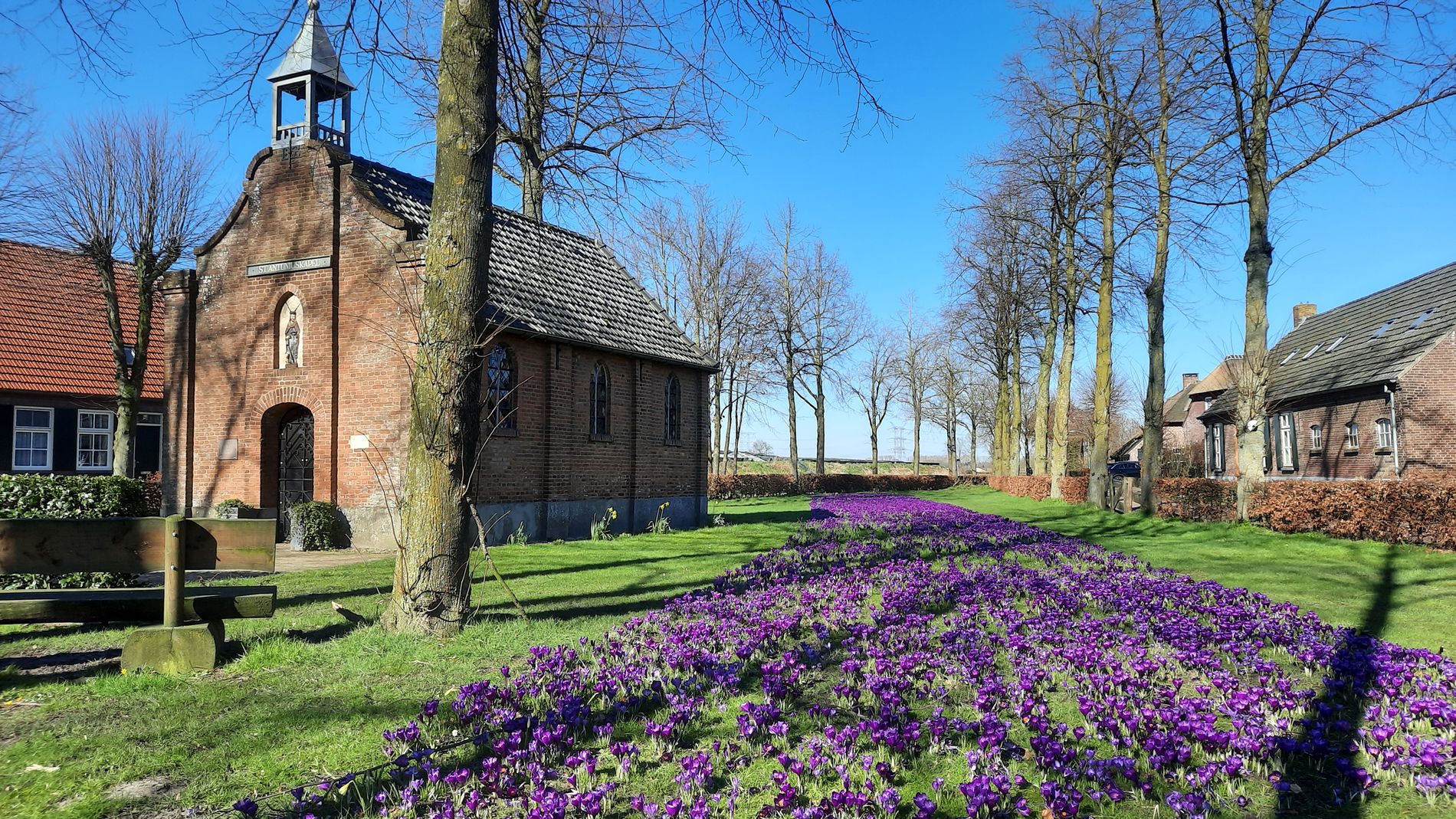Straten and St. Anthony's Chapel
In Oirschot, you will discover the picturesque hamlet of Straten: a small square featuring a chapel dating back to 1853. It holds the status of a protected village view.
The hamlet of Straten has the unique status of a protected village view. Straten is one of the earliest inhabited places in the municipality of Oirschot. Archaeological findings provide evidence of a road dating back to Roman times that ran from the south through Straten and Oirschot to the northeast.
In Straten, there once stood a Roman building, and its tuff stone building material was likely used centuries later in the construction of the Mariakerk (Butter Church) on Vrijthof Square in the center of Oirschot. Discoveries also suggest the existence of a settlement in the 7th century AD. The first written mention of Straten dates back to the 14th century.
During the 19th century, Straten was home to about a hundred farming families. In the winter, they spent their time weaving and making wooden shoes. Straten had its own school since 1790: the Sint-Anthoniusschool, which is now the Dalton Kindcentrum AvontuurRijk.
The focal point o…
The hamlet of Straten has the unique status of a protected village view. Straten is one of the earliest inhabited places in the municipality of Oirschot. Archaeological findings provide evidence of a road dating back to Roman times that ran from the south through Straten and Oirschot to the northeast.
In Straten, there once stood a Roman building, and its tuff stone building material was likely used centuries later in the construction of the Mariakerk (Butter Church) on Vrijthof Square in the center of Oirschot. Discoveries also suggest the existence of a settlement in the 7th century AD. The first written mention of Straten dates back to the 14th century.
During the 19th century, Straten was home to about a hundred farming families. In the winter, they spent their time weaving and making wooden shoes. Straten had its own school since 1790: the Sint-Anthoniusschool, which is now the Dalton Kindcentrum AvontuurRijk.
The focal point of Straten is the chapel located on the triangular square. This chapel was built in 1853 on the spot where a chapel stood in the 15th and 17th centuries. The earlier chapel was constructed following a miraculous appearance of a white horse that assisted the Stratense population during a devastating plague epidemic. The salvation from the plague was attributed to Saint Anthony the Abbot, and in gratitude, a chapel was built. Anthony the Abbot was a hermit and is a patron saint against contagious diseases in livestock, often depicted with a pig. In Straten, he is also known as "Sint Tunnis mi 't vérreken," not to be confused with Saint Anthony of Padua, invoked when something is lost.
The entire population of Straten contributed to the maintenance of the chapel. In earlier times, a rosary was prayed every Sunday afternoon, and if someone was seriously ill or had passed away, the chapel bell rang to invite people to prayer.
The centenary of the chapel was extensively celebrated in 1953. The following year, the care for the chapel, both inside and outside, was entrusted to a foundation. In 1966, the chapel officially became a monument, but time had taken its toll. In 1992, a thorough renovation of both the chapel and the square began. On May 8, 1993, the chapel was ceremoniously rededicated.
Around Straten, there are several "bolle akkers" (rounded fields), clearly visible mounds resulting from centuries of fertilization with stable manure and heath sods. This is reflected in the street name De Bollen.
This is how to reach Straten and St. Anthony's Chapel
Straten 13 C
Oirschot Plan your route naar Straten and St. Anthony's Chapel
Starting point: from your location

